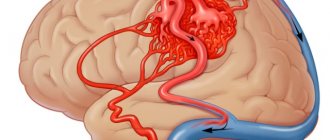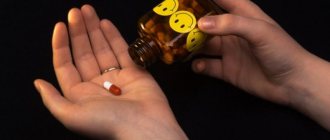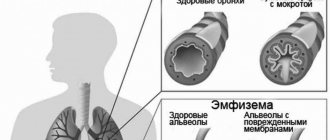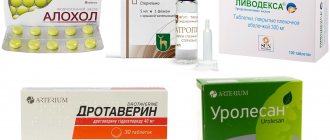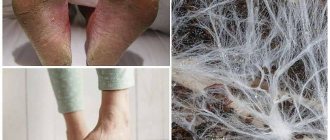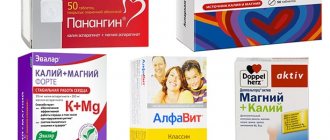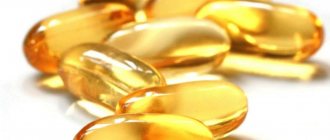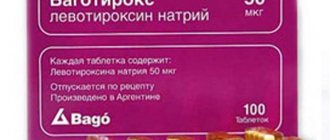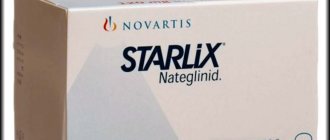In drug therapy, anticoagulants are used to prevent blood clotting. For diseases directly or indirectly related to thrombus formation, they can be considered vital. The list of anticoagulant drugs includes direct and indirect drugs.
Prescribed for treatment:
- Acute venous and arterial thrombosis.
- Pathologies associated with the release of large amounts of thromboplastic substances from tissues.
- After previous operations to prevent the formation of blood clots.
- As a preventive measure in the presence of heart disease.
What drugs are classified as anticoagulants? These medications have blood thinning properties and are also called anticoagulants. They are divided into two groups: direct and indirect action.
Mechanism of action
Anticoagulants according to their mechanism of action are divided into drugs of direct and indirect action:
“Direct” anticoagulants have a direct effect on thrombin and reduce its activity. These drugs are thrombin inhibitors, prothrombin deactivators and inhibit the process of thrombus formation. To avoid internal bleeding, it is necessary to monitor the blood coagulation system. Direct-acting anticoagulants quickly penetrate the body, are well absorbed in the gastrointestinal tract, reach the liver hematogenously, exert their therapeutic effect and are excreted together with urine.
- “Indirect” anticoagulants affect the biosynthesis of side enzymes of the blood coagulation system. They completely destroy thrombin, and do not simply suppress its activity. In addition to the anticoagulant effect, drugs in this group improve blood supply to the myocardium, relax smooth muscles, remove urates from the body, and have a hypocholesterolemic effect. “Indirect” anticoagulants are prescribed not only for the treatment of thrombosis, but also for their prevention. They are used exclusively internally. Tablet forms are used for a long time on an outpatient basis. Abrupt withdrawal of the drug can lead to an increase in prothrombin levels and thrombosis.
Separately, there are drugs that suppress blood clotting, like anticoagulants, but by different mechanisms. These include Acetylsalicylic acid and Aspirin.
Classification
The benefits of natural anticoagulants, which are synthesized by the body and prevail in sufficient concentration to control blood viscosity, are obvious. However, natural coagulation inhibitors can be susceptible to a number of pathological processes, so there is a need to introduce synthetic anticoagulants into the complex treatment regimen. Before determining the list of medications, the patient needs to consult a doctor to rule out potential health complications.
Direct anticoagulants
The list of such drugs is designed to suppress thrombin activity, reduce fibrin synthesis, and normal liver function. These are local heparins for subcutaneous or intravenous administration, necessary for the treatment of varicose veins of the lower extremities. The active components are productively absorbed into the systemic bloodstream, act throughout the day, and are more effective when administered subcutaneously than when administered orally. Among low-molecular-weight heparins, doctors identify the following list of drugs intended for administering heparins topically, intravenously or orally:
- Fraxiparine;
- Lyoton-gel;
- Clexane;
- Heparin ointment;
- Fragmin;
- Hepatrombin;
- Sodium hydrogen citrate (heparin is administered intravenously);
- Klivarin.
Indirect anticoagulants
These are long-acting drugs that act directly on blood clotting. Indirect anticoagulants promote the formation of prothrombin in the liver and contain vitamins valuable for the body in their chemical composition. For example, Warfarin is prescribed for atrial fibrillation and artificial heart valves, while the recommended doses of Aspirin are less effective in practice. The list of drugs is represented by the following classification of the coumarin series:
- monocoumarins: Warfarin, Sinkumar, Mrakumar;
- indandiones: Phenilin, Omefin, Dipaxin;
- Dicoumarins: Dicoumarin, Tromexane.
To quickly normalize blood clotting and prevent vascular thrombosis after a myocardial infarction or stroke, doctors strongly recommend oral anticoagulants containing vitamin K in their chemical composition. These types of medications are also prescribed for other pathologies of the cardiovascular system that are prone to chronicity and relapses. In the absence of extensive kidney disease, the following list of oral anticoagulants should be highlighted:
NOAC anticoagulants
This is a new generation of oral and parenteral anticoagulants, which are being developed by modern scientists. Among the advantages of this prescription are a quick effect, complete safety with respect to the risk of bleeding, and reversible inhibition of thrombin. However, there are also disadvantages of such oral anticoagulants, and here is a list of them: bleeding into the gastrointestinal tract, the presence of side effects and contraindications. In addition, to ensure a long-term therapeutic effect, thrombin inhibitors must be taken for a long time, without violating the recommended daily doses.
The drugs are universal, but the effect in the affected body is more selective, is temporary, and requires long-term use. In order to normalize blood clotting without serious complications, it is recommended to take one of the stated list of new generation oral anticoagulants:
Direct anticoagulants
Heparin
The most popular representative of this group is heparin and its derivatives. Heparin inhibits platelet aggregation and speeds up blood flow in the heart and kidneys. At the same time, it interacts with macrophages and plasma proteins, which does not exclude the possibility of thrombosis. The drug lowers blood pressure, has a hypocholesterolemic effect, increases vascular permeability, suppresses the proliferation of smooth muscle cells, promotes the development of osteoporosis, suppresses the immune system and increases diuresis. Heparin was first isolated from the liver, which determined its name.
Heparin is administered intravenously in emergency cases and subcutaneously for prophylactic purposes. For local use, ointments and gels are used that contain heparin and have an antithrombotic and anti-inflammatory effect. Heparin preparations are applied in a thin layer to the skin and rubbed in with gentle movements. Typically, the gels “Lioton” and “Hepatrombin”, as well as “Heparin ointment” are used to treat thrombophlebitis and thrombosis.
The negative effect of heparin on the process of thrombus formation and increased vascular permeability cause a high risk of bleeding during heparin therapy.
Low molecular weight heparins
Low molecular weight heparins have high bioavailability and antithrombotic activity, prolonged action, and a low risk of developing hemorrhoidal complications. The biological properties of these drugs are more stable. Due to rapid absorption and a long elimination period, the concentration of drugs in the blood remains stable. Medicines in this group inhibit blood coagulation factors, suppress thrombin synthesis, have a weak effect on vascular permeability, improve the rheological properties of blood and blood supply to organs and tissues, stabilizing their functions.
Low molecular weight heparins rarely cause side effects, which is why they are replacing heparin from therapeutic practice. They are injected subcutaneously into the lateral surface of the abdominal wall.
- "Fragmin" is a clear or yellowish solution that has a weak effect on platelet adhesion and primary hemostasis. It is prohibited to be administered intramuscularly. "Fragmin" in high doses is prescribed to patients immediately after operations, especially to those individuals who have a high risk of bleeding and the development of platelet dysfunction.
- "Clivarin" is a "direct" anticoagulant that affects most phases of blood coagulation. The drug neutralizes enzymes of the coagulation system and is used to treat and prevent thromboembolism.
- "Clexan" is a drug with antithrombotic and anti-inflammatory pharmacological effects. Before prescribing it, it is necessary to discontinue all medications that affect hemostasis.
- "Fraxiparin" is a solution with antithrombotic and anticoagulant effects. Subcutaneous hematomas or dense nodules often form at the injection site of the drug, which disappear on their own after a few days. At the beginning of treatment with large doses, bleeding and thrombocytopenia may develop, which disappears during further therapy.
- "Wessel Due F" is a natural remedy obtained from the intestinal mucosa of animals. The drug suppresses the activity of blood coagulation factors, stimulates the biosynthesis of prostaglandins, and reduces the level of fibrinogen in the blood. "Wessel Due F" lyses an already formed blood clot and is used to prevent thrombus formation in arteries and veins.
When using drugs from the group of low molecular weight heparins, you must strictly follow the recommendations and instructions for their use.
Thrombin inhibitors
The main representative of this group is “Girudin” . The drug is based on a protein first discovered in the saliva of medicinal leeches. These are anticoagulants that act directly in the blood and are direct thrombin inhibitors.
"Girugen" and "Girulog" are synthetic analogues of "Hirudin" that reduce the mortality rate among people with heart pathology. These are new drugs in this group that have a number of advantages compared to heparin derivatives. Due to their prolonged action, the pharmaceutical industry is currently developing oral forms of thrombin inhibitors. The practical use of Girugen and Girulog is limited by their high cost.
Lepirudin is a recombinant drug that irreversibly binds thrombin and is used to prevent thrombosis and thromboembolism. This is a direct thrombin inhibitor, blocking its thrombogenic activity and acting on thrombin located in the clot. It reduces mortality from acute myocardial infarction and the need for cardiac surgery in patients with exertional angina.
New generation anticoagulants
A feature of the drugs is the ability not to constantly monitor the blood clotting index (INR). Judging by this property, the new drugs are superior to Warfarin in ease of use. However, the high price of drugs limits their availability, which is a significant drawback.
The list of new generation anticoagulant drugs includes:
1. Xarelto (Germany). The active component of the medicine is rivaroxaban. Clinical studies have proven the high effectiveness of this product. Easy to use. Does not tie patients to constant testing.
- Cost of 15 mg tablet 28 pcs. – 2700 rub.
2. Eliquis (USA). The main active ingredient apixaban restores the patency of veins. Used for the prevention of cardioembolic stroke. Does not require systematic monitoring of hemostasis.
- Price of tablets 5 mg 60 pieces – 2400 rub.
3. Pradaxa (Austria). The main component of the drug dabigatran etexilate. Prescribed for venous and systemic thromboembolism, including damage to the pulmonary artery after severe injuries and complex operations.
Well tolerated. During drug therapy, practitioners note a low risk of bleeding.
- Capsules 110 mg 30 pcs. – 1750 rubles.
Indirect anticoagulants
Indirect anticoagulant drugs:
- “Phenilin” is an anticoagulant that is quickly and fully absorbed, easily penetrates the histohematic barrier and accumulates in the tissues of the body. This medicine, according to patients, is considered one of the most effective. It improves blood condition and normalizes blood clotting parameters. After treatment, the general condition of patients quickly improves: cramps and numbness of the legs disappear. Currently, Phenilin is not used due to the high risk of unwanted effects.
- "Neodicoumarin" is a drug that inhibits the process of thrombus formation. The therapeutic effect of Neodicoumarin does not appear immediately, but after the drug accumulates in the body. It suppresses the activity of the blood coagulation system, has a hypolipidemic effect and increases vascular permeability. Patients are advised to strictly adhere to the time of administration and dose of the drug.
- The most common drug in this group is Warfarin. This is an anticoagulant agent that blocks the synthesis of blood clotting factors in the liver, reducing their concentration in plasma and slowing down the process of thrombus formation. "Warfarin" is characterized by an early effect and rapid cessation of undesirable consequences when the dose is reduced or the drug is discontinued.
Video: new anticoagulants and “Warfarin”
Natural
They can be physiological and pathological. Physiological anticoagulants are normally present in plasma. Pathological ones appear in the blood in some diseases.
Physiological anticoagulants are divided into primary and secondary. Primary ones are synthesized by the body independently and are constantly in the blood. Secondary ones are formed during the breakdown of coagulation factors during the formation of fibrin and its dissolution.
Primary natural anticoagulants
They are usually divided into groups:
- Antithromboplastins.
- Antithrombins.
- Inhibitors of fibrin self-assembly.
When the level of primary physiological anticoagulants in the blood decreases, there is a risk of developing thrombosis.
This group of substances includes:
- Heparin. It is a polysaccharide synthesized in mast cells. It is found in significant quantities in the lungs and liver. In large doses, it interferes with the blood clotting process at all stages and suppresses a number of platelet functions.
- Antithrombin III. Synthesized in the liver, it belongs to alpha₂-glycoproteins. Reduces the activity of thrombin and some activated coagulation factors, but does not affect non-activated factors. The anticoagulant activity of plasma is 75% provided by antithrombin III.
- Protein C. It is synthesized by liver parenchyma cells and is in an inactive form in the blood. Activated by thrombin.
- Protein S. Synthesized by endothelial cells and liver parenchyma (hepatocytes), depends on vitamin K.
- Alpha₂-macroglobulin.
- Antithromboplastins.
- Contact inhibitor.
- Lipid inhibitor.
- Complement inhibitor-I.
Secondary physiological anticoagulants
We also recommend reading: Blood thinners
As already mentioned, they are formed during the process of blood coagulation and the dissolution of fibrin clots during the breakdown of certain coagulation factors, which, due to degradation, lose their coagulation properties and acquire anticoagulation properties. These include:
- Antithrombin I.
- Antithrombin IX.
- Metafactors XIa and Va.
- Febrinopeptides.
- Auto-II anticoagulant.
- Antithromboplastins.
- PDF are products formed during the breakdown (degradation) of fibrin under the influence of plasmin.
Pathological anticoagulants
In some diseases, specific antibodies can form and accumulate in the blood, preventing blood clotting. They can be produced against any coagulation factors, but inhibitors of factors VIII and IX are most often produced. In some autoimmune diseases, pathological proteins appear in the blood that have an antithrombin effect or suppress coagulation factors II, V, Xa.
You can read more about pathological lupus anticoagulant in this article.
Use of anticoagulants
Taking anticoagulants is indicated for diseases of the heart and blood vessels:
- Thrombotic and embolic stroke,
- Atherosclerosis,
- Rheumatic heart disease,
- Thrombophlebitis,
- Acute thrombosis,
- Mitral heart defects,
- aortic aneurysm,
- Varicose veins,
- Coronary heart disease,
- DIC syndrome,
- TELA,
- Atrial fibrillation,
- Thrombangiitis obliterans and endarteritis.
Uncontrolled use of anticoagulants can lead to the development of hemorrhagic complications. If there is an increased risk of bleeding, safer antiplatelet agents should be used instead of anticoagulants.
When are medications prescribed?
Anticoagulants are prescribed in the following cases:
- Stroke due to embolism or blockage of blood vessels by thrombotic masses.
- Atherosclerotic vascular lesions.
- Rheumatic carditis.
- Thrombophlebitis.
- Mitral valve disease.
- Thrombosis in the acute stage.
- Varicose veins.
- Aortic aneurysm.
- IBS.
- Pulmonary embolism.
- DIC syndrome.
- Thrombangiitis and endarteritis obliterans.
- Atrial fibrillation.
If a person takes anticoagulants without medical supervision, this is associated with the risk of developing severe complications, including hemorrhagic hemorrhages in the brain. If the patient is predisposed to bleeding, then for his treatment one should use antiplatelet drugs, which have a gentle effect on the body and do not cause such complications.
DETAILS: Makeup for a woman over 50 step by step, how to properly do makeup for a woman over 50 to look younger. Correct day and evening eye makeup that makes you look younger
What drugs are used in anticoagulant therapy?
Contraindications and side effects
Anticoagulants are contraindicated for persons suffering from the following diseases:
- Peptic ulcer of the stomach and duodenum,
- Bleeding hemorrhoids,
- Chronic hepatitis and liver fibrosis,
- Liver and kidney failure,
- Urolithiasis disease,
- Thrombocytopenic purpura,
- Deficiency of vitamins C and K,
- Endocarditis and pericarditis,
- Cavernous pulmonary tuberculosis,
- Hemorrhagic pancreatitis,
- Malignant neoplasms,
- Myocardial infarction with hypertension,
- Intracerebral aneurysm,
- Leukemia,
- Alcoholism,
- Crohn's disease,
- Hemorrhagic retinopathy.
Anticoagulants should not be taken during pregnancy, lactation, menstruation, in the early postpartum period, as well as by elderly people.
Side effects of anticoagulants include: symptoms of dyspepsia and intoxication, allergies, necrosis, rash, skin itching, kidney dysfunction, osteoporosis, alopecia.
Complications of anticoagulant therapy are hemorrhagic reactions in the form of bleeding from internal organs: mouth, nasopharynx, stomach, intestines, as well as hemorrhages in muscles and joints, and the appearance of blood in the urine. To prevent the development of hazardous health consequences, you should monitor basic blood counts and monitor the general condition of the patient.
Oligopeptides
Medications that act directly on the thrombin activation center are considered strong specific inhibitors of the thrombus formation system. The active substances of the drugs independently combine with coagulation factors, changing their conformation.
These are the drugs “Inogatran”, “Girudin”, “Efegatran”, “Tromstop” and others. Used to prevent the development of heart attacks during angina pectoris, varicose veins, to prevent thromboembolism, reocclusion during angioplasty.
Antiplatelet agents
Antiplatelet agents are pharmacological agents that reduce blood clotting by inhibiting platelet aggregation. Their main purpose is to enhance the effectiveness of anticoagulants and, together with them, prevent the process of thrombus formation. Antiplatelet agents also have antigout, vasodilator and antispasmodic effects. A prominent representative of this group is “Acetylsalicylic acid” or “Aspirin”.
List of the most popular antiplatelet agents:
- Aspirin is the most effective antiplatelet agent available today, produced in tablet form and intended for oral use. It inhibits platelet aggregation, causes vasodilation and prevents the formation of blood clots.
- Ticlopidine is an antiplatelet agent that inhibits platelet adhesion, improves microcirculation and prolongs bleeding time. The drug is prescribed for the prevention of thrombosis and for the treatment of coronary artery disease, heart attack and cerebrovascular disease.
- Tirofiban is a medicine that prevents platelet aggregation, leading to blood clots. The drug is usually used together with Heparin.
- “Dipyridamole” dilates coronary vessels, accelerates coronary blood flow, improves oxygen supply to the myocardium, rheological properties of blood and cerebral circulation, and lowers blood pressure.
Coumarin derivatives
Coumarin is a substance that is found in plants and can be produced synthetically in the laboratory. At first, after its removal, the product was used as a poison to control rodents. Only over time, the drug began to be used to combat excessive blood clots.
Indirect anticoagulants - coumarin-based drugs - are represented by the following medications:
- "Warfarin" (its analogues are "Marevan", "Warfarin sodium", "Warfarex").
- "Acenocoumarol" (analogue - "Sinkumar").
- "Neodicoumarin" (analogue - "Ethylbiscoumacetate").
Natural blood thinners
Adherents of traditional treatment methods use herbs with a blood-thinning effect to prevent thrombosis. The list of such plants is quite long:
- horse chestnut;
- willow bark;
- mulberry;
- sweet clover;
- wormwood;
- meadowsweet:
- Red clover;
- liquorice root;
- evasive peony;
- chicory and others.
Before using herbs, it is advisable to consult a doctor: not all plants can be beneficial.
Red clover is used in folk medicine as a means to improve blood flow.
Non-anticoagulant drugs, such as sodium citrate, sodium salicylate, and acetylsalicylic acid, also reduce blood clotting.
In what cases are anticoagulants prescribed?
Direct and indirect anticoagulants are used to prevent the development of thromboembolism, acute thrombosis of the venous system, in the case of mechanical replacement of heart valves and the development of atrial fibrillation.
The main diseases for the development of which anticoagulants of direct and indirect action are prescribed are divided into groups as follows:
- Thrombosis of the arterial system:
- myocardial infarction;
- pulmonary embolism;
- stroke with manifestations of ischemia;
- traumatic damage to arteries due to atherosclerosis.
- Disseminated intravascular coagulation:
- states of shock;
- traumatic injuries;
- development of sepsis.
- Acute venous thrombosis:
- thrombus formation due to varicose veins;
- thrombosis of hemorrhoidal venous plexuses;
- formation of clots in the inferior vena cava.
Low molecular weight heparins
Dalteparin, enoxaparin, nadroparin, parnaparin, sulodexide, bemiparin are obtained from unfractionated heparin. They differ from the latter in their smaller molecular size. This increases the safety of the drugs. The action becomes longer and more predictable, so the use of low molecular weight heparins does not require laboratory control. It can be carried out using fixed doses - syringes.
The advantage of low molecular weight heparins is their effectiveness when administered subcutaneously. In addition, they have a significantly lower risk of side effects. Therefore, heparin derivatives are currently replacing heparin from clinical practice.
Low molecular weight heparins are used to prevent thromboembolic complications during surgery and deep vein thrombosis. They are used in patients on bed rest and at high risk of such complications. In addition, these drugs are widely prescribed for unstable angina and myocardial infarction.
Contraindications and undesirable effects for this group are the same as for heparin. However, the severity and frequency of side effects is much less.
Direct thrombin inhibitors
Direct thrombin inhibitors, as the name suggests, directly inactivate thrombin. At the same time, they suppress platelet activity. The use of these drugs does not require laboratory control.
Bivalirudin is administered intravenously in acute myocardial infarction to prevent thromboembolic complications. This drug is not yet used in Russia.
Dabigatran (pradaxa) is a tablet drug to reduce the risk of thrombosis. Unlike warfarin, it does not interact with food. Research is currently ongoing on this drug for permanent atrial fibrillation. The drug is approved for use in Russia.
Indandione preparations
After conducting a large number of studies, scientists have found that products based on this active substance should not be used in therapy. The drugs had a significant number of side effects in the form of allergic reactions. The effectiveness of the effect on the anticoagulation system also did not show stable results.
This group of medications includes the following drugs: “Phenindione”, “Diphenindione”, “Anisindione”. It was decided to make the main choice on the second group of antiplatelet agents, and of the indanedione derivatives, only “Phenylin” is currently used.
The drug has a low cost and is available in tablet forms. It works for 10 hours, and it is very important to maintain the required duration of therapy. The effect occurs only 24 hours after the first dose. The use of funds occurs under monitoring of the patient’s condition using laboratory blood parameters (coagulogram, general tests, biochemistry).
Scheme for using "Phenilin":
- The first day - 1 tablet 4 times.
- Second day – 1 tablet 3 times.
- The rest of the therapy - 1 tablet per day.
The drug is not recommended to be taken simultaneously with drugs that reduce glucose levels in the body.
Contraindications [edit | edit code ]
Peptic ulcer and kidney stones, liver diseases, diseases with a tendency to bleeding, pregnancy.
An increase in blood clotting factor dramatically increases the risk of blood clots. Patients of all ages face this problem. Anticoagulants help to cope with it and prevent the development of thrombophlebitis. There are several types of these medications, so the prescription is carried out individually by the doctor.
